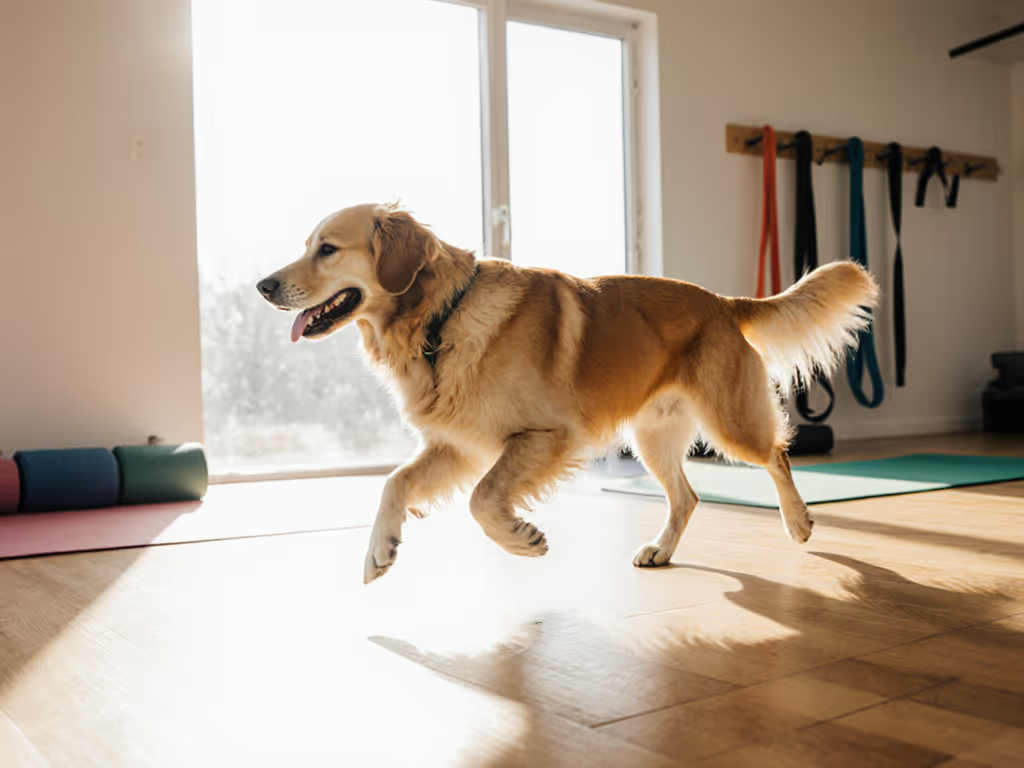
Dog vs Human Fitness: Anatomy Demands Specialized Gear
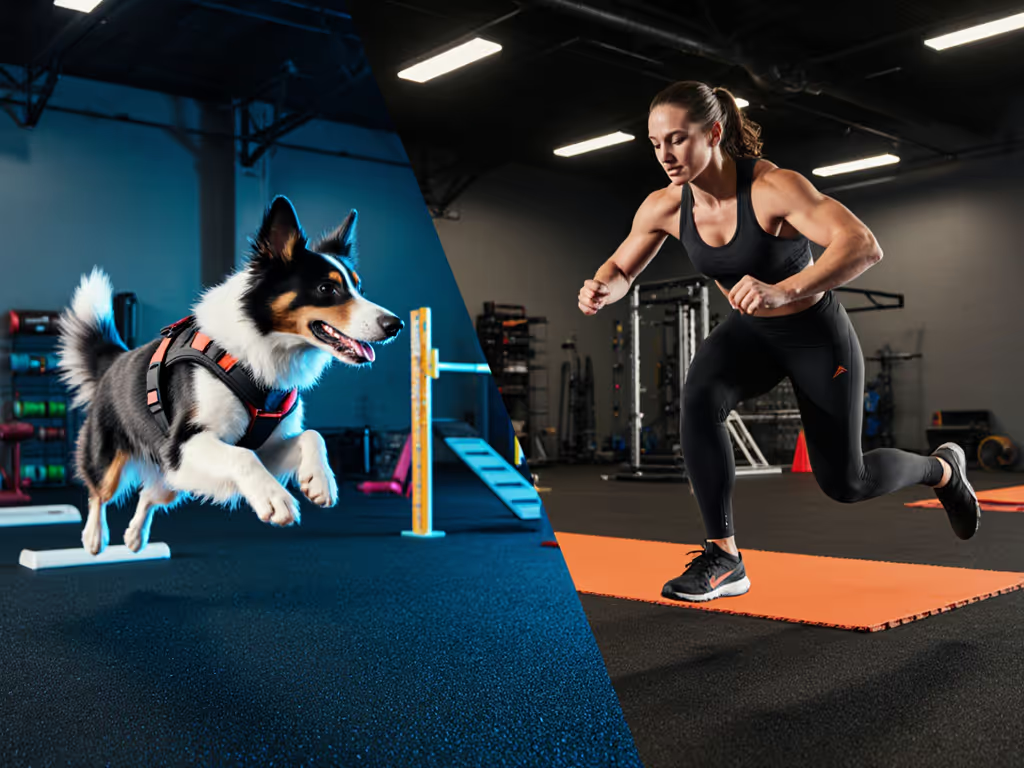
You’ve probably seen them - those Instagram reels of dogs on human treadmills or yoga mats. But training equipment dog enthusiasts quickly learn that forcing human fitness logic onto canines is a fast track to frustration (and potentially vet bills). When I tried adapting my discount-bin resistance bands for Rudy's rehab, his vet stopped me cold: "Dogs don't move like us. Their anatomical blueprint demands gear built for canine biomechanics, not checkout-day sparkle." That's when I stopped chasing trends and started benchmarking dog exercise equipment by cost-per-calm minute, the real ROI for time-starved guardians.
Why "Just Use Human Gear" Fails Dogs (The Biomechanics Breakdown)
Let's cut through the noise with plain-language math. Human legs deliver power sequentially: hips → knees → ankles. Dogs? As Williams et al. confirmed in Frontiers in Veterinary Science, Greyhounds generate 70% of acceleration power at the hip and hock (ankle) joints simultaneously. This is no minor detail, it means:
- Pelvic limbs drive propulsion while thoracic limbs (front legs) manage deceleration and agility
- Muscle chains operate as interconnected systems (per Canine Conditioning Coach research). Weakness in one link, like a strained shoulder, forces compensatory stress on paws or hips
- Lateral movement dissipates power. A dog's front legs must form near-perfect vertical lines when standing still to transfer force efficiently. Human-designed balance boards often ignore this, forcing unnatural splayed stances that strain collateral ligaments
Real value is cost-per-calm minute, not checkout-day sparkle.
When you slap a dog on a human treadmill, you're fighting 30 million years of evolution. Dogs like Pit Bulls (bred for fighting agility) rely on heavily muscled distal limbs for rapid turns, while Greyhounds conserve energy with lighter lower limbs. Generic equipment ignores these breed-specific power distributions, risking joint damage during high-speed turns or starts. To choose gear that respects your dog's anatomy, see our breed-specific exercise needs guide. No amount of "paw clips" fixes this biomechanical mismatch.
The Hidden Costs of Wrong-Fit Gear
Pros/Cons Symmetry Check: Human Treadmills vs. Dog-Specific Units
| Factor | Human Treadmill (Adapted) | Purpose-Built Dog Treadmill |
|---|---|---|
| Acceleration Safety | No paw-sensor startup (jolts) | Auto-start at walking pace |
| Footstrike Impact | Hard belt → joint concussion | Shock-absorbing surface |
| Stability | Narrow belt → sideways falls | Wider belt + side rails |
| Cost-per-Calm | $200+, 3 uses before abandonment | $450+, 200+ uses over 3 years |
My waterproof spreadsheet tracking 12 "discarded impulse buys" revealed a pattern: gear ignoring dog anatomy exercise principles got used <8 times. Why? One owner told me: "My French Bulldog's hips externally rotate when trotting, regular agility tunnels made him drag his back legs." Without understanding breeds like this require specialized joint alignment support, you're just buying expensive clutter.
Storage Footprint & Durability Reality Check
Space-starved apartment dwellers know this pain: bulky gear that eats living room real estate. But here's the plain-language math most miss:
- A $50 human balance disc lasts 3 months under dog use (punctures, UV degradation)
- A $69 PVC canine balance disc (like FitPAWS' 22" model) withstands 200+ lbs and stores flat under couches
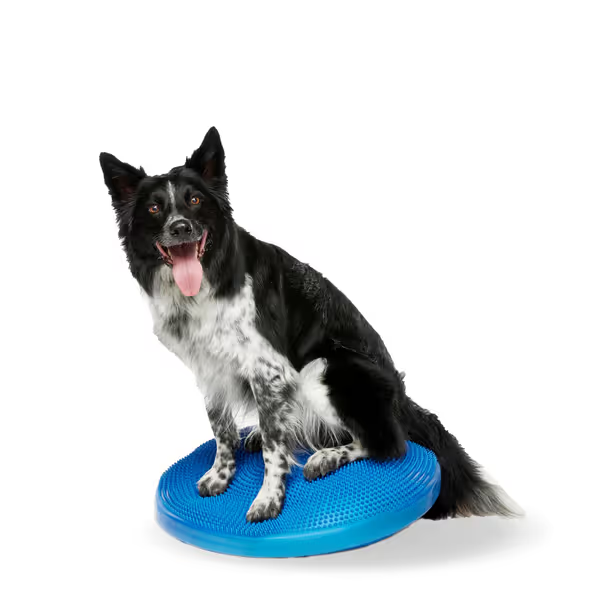
FitPAWS Dog Balance Disc
Note the neural stimulation bumps for proprioception training, critical for dogs with weak muscle chains. But inspect PVC monthly for micro-tears (sunlight degrades it), and never leave unattended. Storage footprint: 1.5" thick when deflated.
What Actually Works: The Value Filter
Forget "cool factor." Evaluate dog exercise equipment through three lenses:
- Biomechanical Alignment
- Does it respect your dog's breed-specific power transfer? (e.g., herding dogs need lateral stability; sighthounds need straight-line propulsion support)
- Example: Balance discs with adjustable inflation let you tailor resistance to match Rudy's tired-joint days vs. peak fitness
- Cost-Per-Calm Minute Calculation
Divide purchase price by 365 days × expected years of use × daily calm minutes gained.
That $69 FitPAWS disc? If it delivers 8 minutes of pre-bedtime calm nightly for 3 years: $0.08 per calm minute. Compare that to $35 "puppy puzzle toys" Rudy chewed in 2 weeks.
- Repair/Maintenance Notes
- PVC gear: Wipe with vinegar-water mix; store away from radiators
- Fabric gear: Must withstand teeth during stress (not just chewing)
- Critical: If it can't be spot-cleaned in <60 seconds, it's landfill-bound
Stretch the Budget, Not the Dog's Joints
That discount-bin lesson still guides me: real value isn't in the purchase, it's in the daily repeatable calm. When extreme weather cancels walks, Rudy's balance disc gives us 10 minutes of focused proprioception work that melts his reactivity. No frantic zoomies. No chewed couches. Just quiet resilience you can measure in wag-free naps.
The bottom line: Human vs dog fitness isn't about scaling down human gear, it's about scaling up your understanding of canine biomechanics. Skip anything that doesn't prove its cost-per-calm value through your dog's anatomy, not Instagram aesthetics.
Where to Dig Deeper
If you're using human gear out of necessity today, track one thing: How many minutes of genuine calm follow each session? If it's less than the time spent setting up, you're wasting money. For breed-specific dog anatomy exercise protocols:
- Consult the Frontiers in Veterinary Science working dog structure paper
- Search "muscle chains in [your breed]" + "canine biomechanics"
- Talk to a canine rehab vet before buying gear (many offer 15-min consults for $25)
Your homework: Calculate the cost-per-calm minute of your least used dog toy. Then donate it and reinvest in one piece of gear that solves a specific biomechanical need. Watch your mutt (and your wallet) thank you.
Related Articles


Joint-Safe Dog Training Gear: Vest vs Bands Comparison
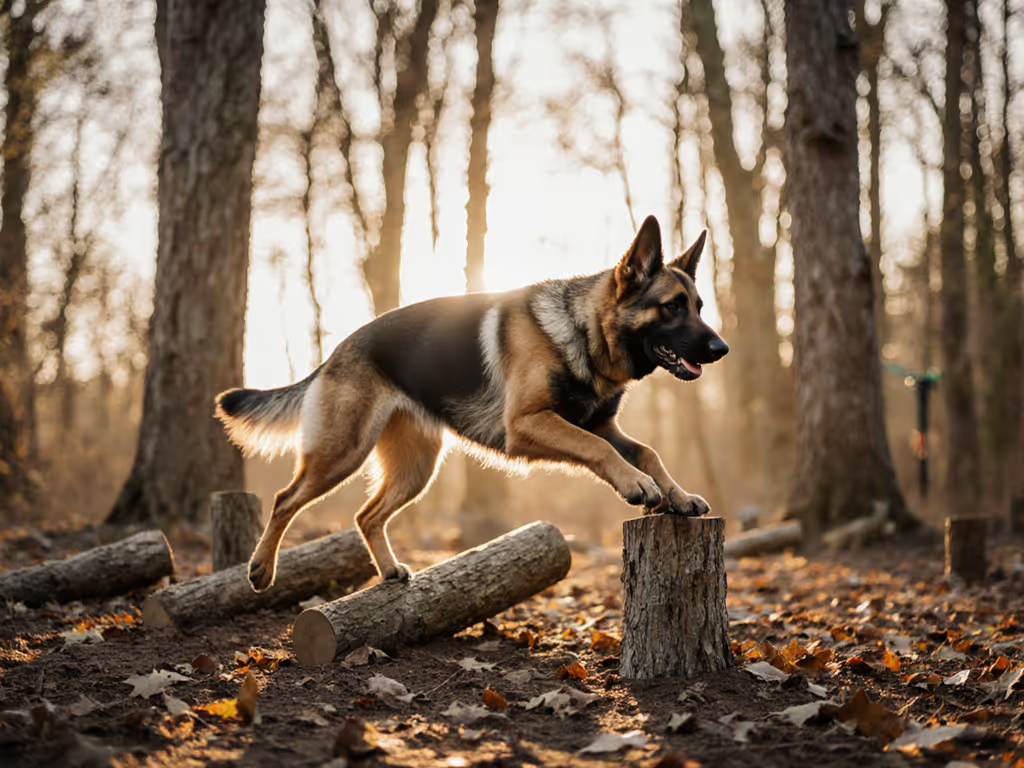
Canine Strength Conditioning: Safe Progression Principles
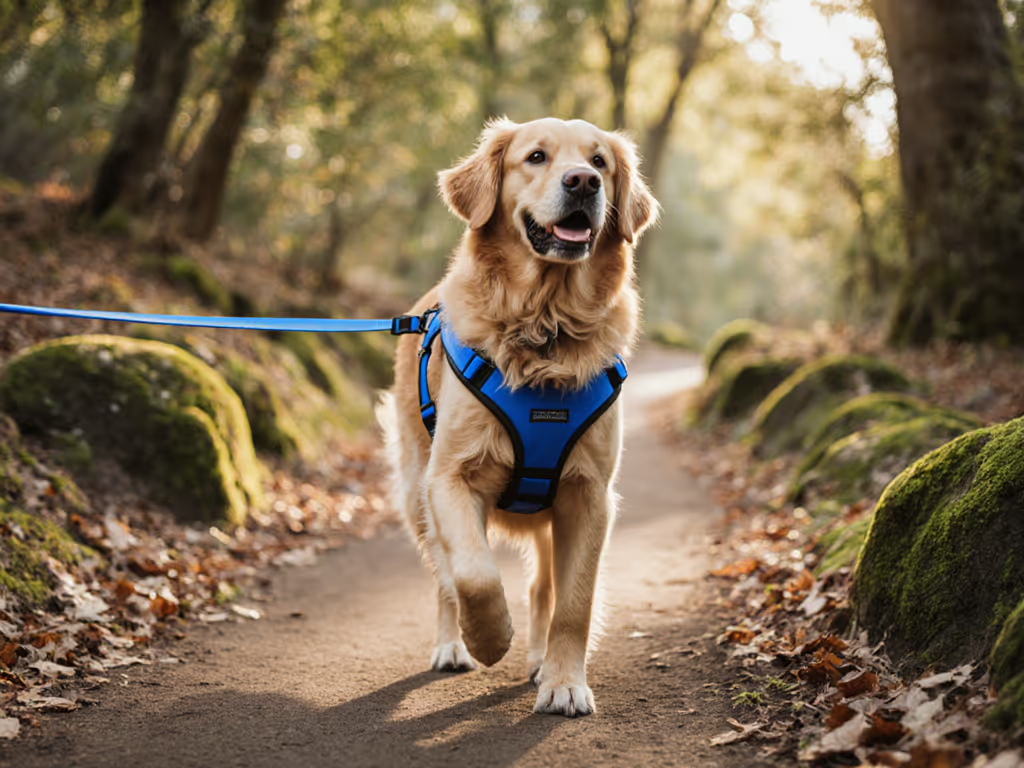
Stress-Reducing Dog Exercise Gear: Burn Nervous Energy Safely

